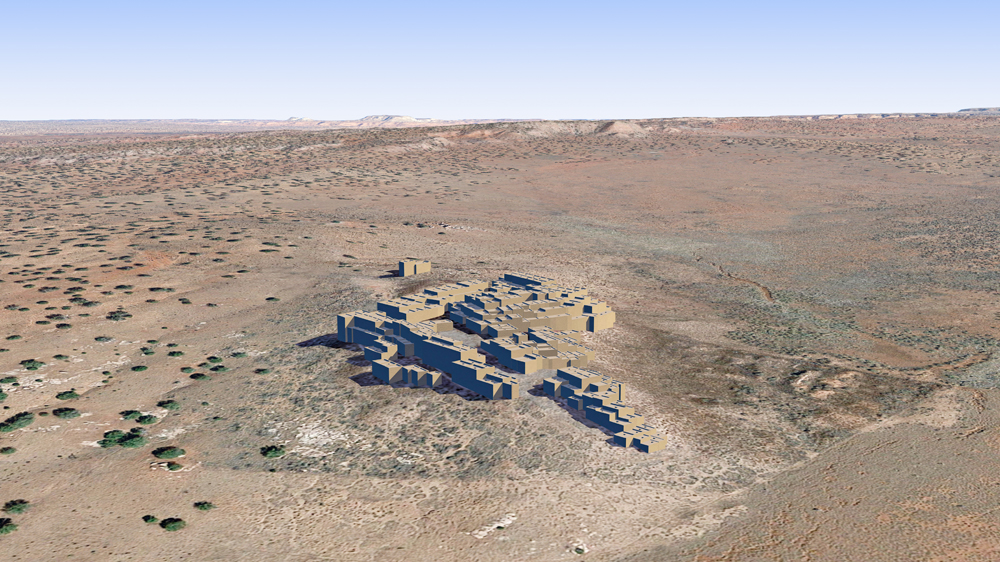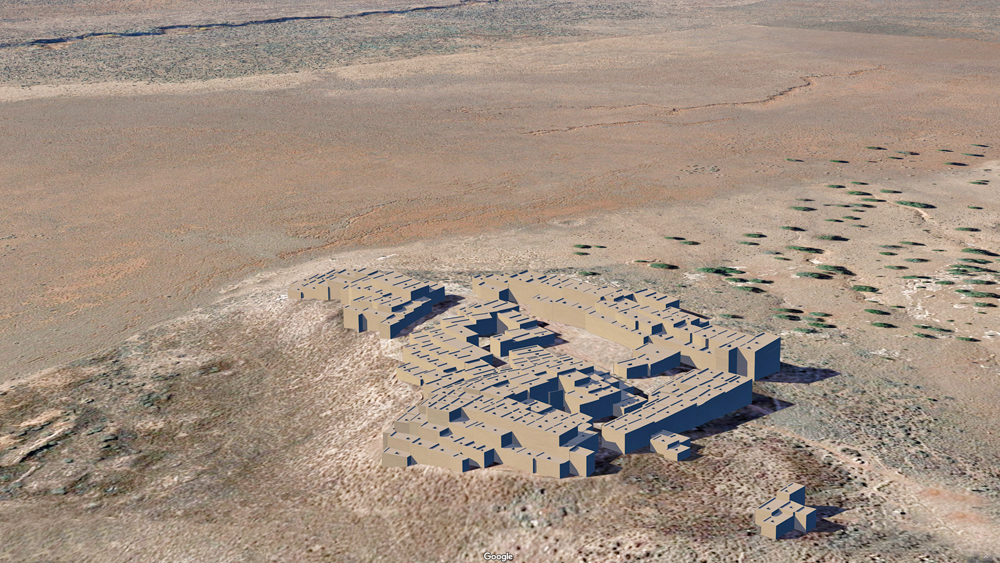
Hawikuh Pueblo Ruin (Penutian Zuni language for "gum leaves")

Zuni Ancestral Pueblo, founded in 1400 C.E., and is the place of first contact between the Pueblo World and the European World in 1539 C.E..; located about 19 kilometers (12 miles) southwest of Zuni Village. The Penutian Zuni language is uniquely unrelated to any other Puebloan language.
Location coordinates: 34°55'57.8"N 108°59'05.4"W
34.932729, -108.984831
Elevation is 1872 meters (6142 feet) above sea level.
Materials: mortarless stone walls, wood log roof structure, with mud/clay roof.

Photomontage of Hawikuh CG model upon aerial photo of actual site looking northeast. The Zuni Mountains are on the horizon in the left center.

Photomontage of Hawikuh CG model upon aerial photo of actual site looking southwest. The ruins of the Catholic Church Mission, La Purísima Concepción, built in 1629, is below the Pueblo hill to the left.
Data for this model from:
1. Morgan, William N., 1994. ANCIENT ARCHITECTURE OF THE SOUTHWEST, University of Texas Press, Austin, Texas.
2.Mindeleff, Victor, and Mindeleff, Cosmos, 1891. A STUDY OF PUEBLO ARCHITECTURE: TUSAYAN AND CIBOLA,Eighth Annual Report of the Bureau of Ethnology to the Secretary of the Smithsonian Institution, 1886-1887, Government Printing Office, Washington,
3. Hodge, Frederick Webb; Smith, Watson; Woodbury, Richard B.; Woodbury, Nathalie F. S., 1917-1923; The Excavation of Hawikuh by Frederick Webb Hodge Museum of the American Indian, Heye Foundation Museum of the American Indian, Heye Foundation, 1966.








